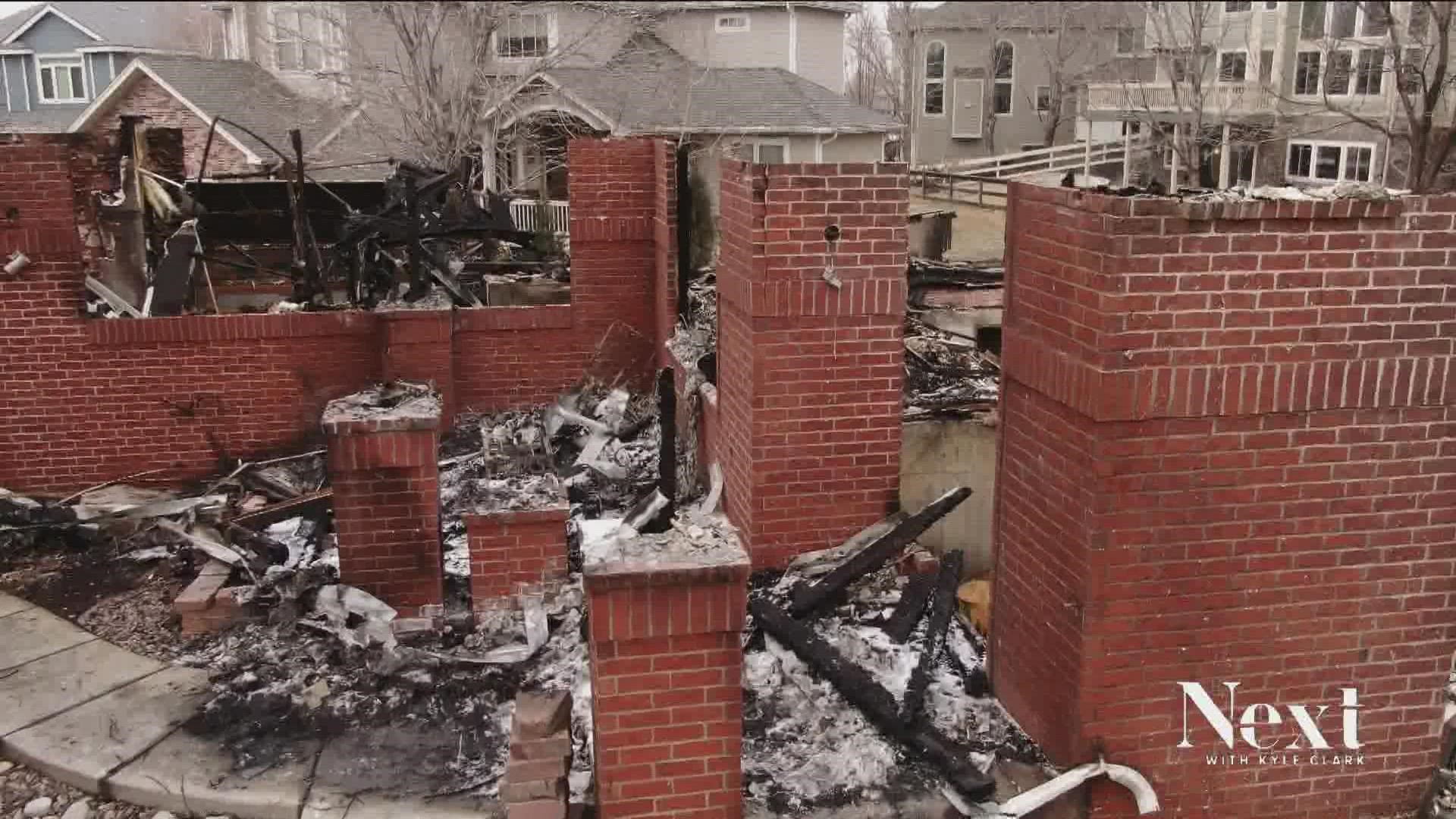FORT COLLINS, Colo. — As we approach one year since Boulder County's Marshall Fire, researchers at Colorado State University (CSU) said they are trying to help prevent widespread damage by using a model to predict which buildings are most at-risk.
Researchers said they've created a model that plots every building in a community and then focuses on the links between those buildings – similar to how public health departments conduct contact tracing.
By focusing on the area surrounding a building, researchers said the model pinpoints which buildings could turn into super-spreaders during a fire.
CSU researchers said there are many current models that try to predict how a fire will spread based on factors like vegetation and wind – but those models are time-consuming and expensive to run.
They're working on a much quicker and cheaper model, based on systems already in use to track the spread of disease.
"With COVID-19, it is possible that some specific group of the population, they might be like a source that transmits the disease a lot easier than others," said Dr. Hussam Mahmoud, CSU professor of civil engineering. "There are certain homes that are more problematic, they are causing the entire risk for the whole community to increase. So I really, really need to mitigate these homes."
Researchers said the models can predict which buildings will burn in a fire with 75% accuracy. They hope their work can be used to prioritize which homes need mitigation and help first responders coordinate their emergency response.
SUGGESTED VIDEOS: Wildfires in Colorado
9NEWS+ has multiple live daily shows including 9NEWS Mornings, Next with Kyle Clark and 9NEWS+ Daily, an original streaming program. 9NEWS+ is where you can watch live breaking news, weather updates, and press conferences. You can also replay recent newscasts and find videos on demand of our top stories, local politics, investigations and Colorado specific features.
To download 9NEWS+ on Roku search for KUSA.
To download 9NEWS+ on Fire TV search for 9NEWS.

